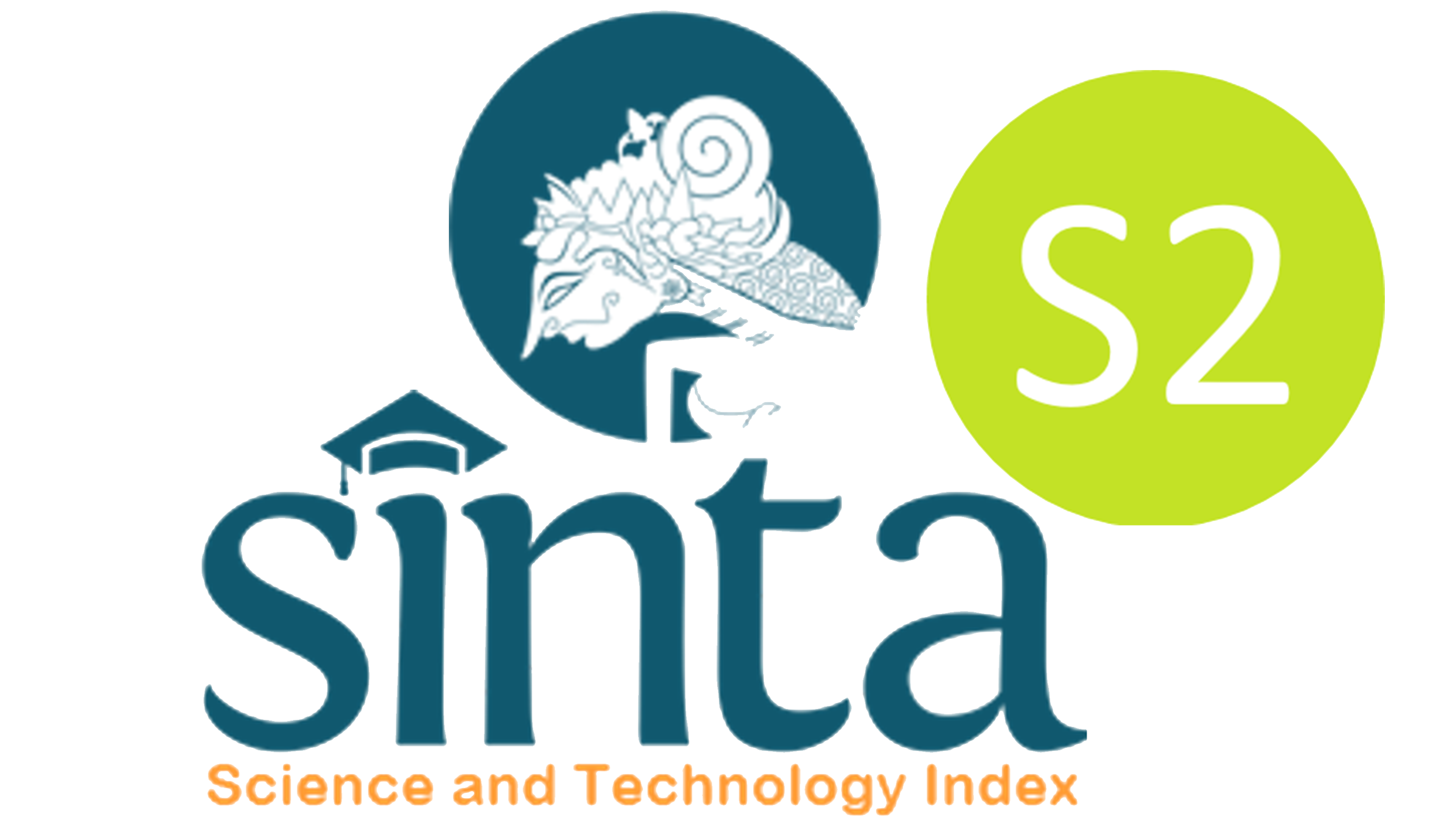The implementation of forward chaining and certainty factor methods to examine the covid-19 vaccination eligibility
Herlina Herlina(1*); Valensa Yosephi(2); Hazriani Hazriani(3);
(1) Universitas Al Asyariah Mandar
(2) Puskesmas Lembang Majene
(3) STMIK Handayani
(*) Corresponding Author
AbstractScreening for the COVID-19 vaccination is an important and mandatory step to ensure the eligibility status of each candidate for vaccination. The main obstacle experienced was the ineffective screening process (a long process) that resulted in the accumulation of patients. Sometimes it takes one to two hours from registration to receiving the vaccination paper. This situation certainly causes discomfort for both participants and vaccinators. Therefore, the presence of an expert system is needed to overcome these obstacles. The expert system plays a role in simplifying service flow and shortening service time. This article discusses the application of the Forward Chaining method to formulate screening parameters so that they can be used to accurately determine vaccination eligibility. Based on the results of interviews with experts (expert doctors who handle vaccination), 12 rules were obtained from the formulation of 20 historical parameters, which will then serve as a knowledge base for the Covid-19 vaccination screening expert system. The test is carried out by comparing the results of expert screening diagnoses with an expert system using 15 samples of test data. The test results using the Certainty Factor method show that the confidence level is 84% to 99%.
KeywordsVaksinasi Covid-19; Skrining; Sistem Pakar; Forward Chaining
|
Full Text:PDF |
Article MetricsAbstract view: 371 timesPDF view: 142 times |
Digital Object Identifier https://doi.org/10.33096/ilkom.v13i3.973.307-313 https://doi.org/10.33096/ilkom.v13i3.973.307-313
|
Cite |
References
W. C, H. PW, H. FG, and G. GF, A novel coronavirus outbreak of global health concern, Lancet (London, England), vol. 395, no. 10223, pp. 470473, Feb. 2020, doi: 10.1016/S0140-6736(20)30185-9.
C. N et al., Epidemiological and clinical characteristics of 99 cases of 2019 novel coronavirus pneumonia in Wuhan, China: a descriptive study, Lancet (London, England), vol. 395, no. 10223, pp. 507513, Feb. 2020, doi: 10.1016/S0140-6736(20)30211-7.
V. Baldo, C. Reno, S. Cocchio, and M. P. Fantini, SARS-CoV-2/COVID-19 Vaccines: The Promises and the Challenges Ahead, Vaccines 2021, Vol. 9, Page 21, vol. 9, no. 1, p. 21, Jan. 2021, doi: 10.3390/VACCINES9010021.
Understanding How COVID-19 Vaccines Work | CDC. https://www.cdc.gov/coronavirus/2019-ncov/vaccines/different-vaccines/how-they-work.html (accessed Oct. 07, 2021).
COVID-19 Vaccines | FDA. https://www.fda.gov/emergency-preparedness-and-response/coronavirus-disease-2019-covid-19/covid-19-vaccines (accessed Oct. 07, 2021).
P. Olliaro, E. Torreele, and M. Vaillant, COVID-19 vaccine efficacy and effectivenessthe elephant (not) in the room, The Lancet Microbe, vol. 2, no. 7, pp. e279e280, Jul. 2021, doi: 10.1016/S2666-5247(21)00069-0.
The Impact of Vaccination on Severity of Illness in COVID-19 - Full Text View - ClinicalTrials.gov. https://clinicaltrials.gov/ct2/show/NCT04912700 (accessed Oct. 07, 2021).
COVID-19 Vaccine Reduces Severity, Length, Viral Load for Those Who Still Get Infected | University of Arizona News. https://news.arizona.edu/story/covid-19-vaccine-reduces-severity-length-viral-load-those-who-still-get-infected (accessed Oct. 07, 2021).
Berita Terkini | Satgas Penanganan Covid-19. https://covid19.go.id/berita/data-vaksinasi-covid-19-update-31-juli-2021 (accessed Oct. 07, 2021).
Herlina, Sistem Pakar E-Procurement Sebagai Alat Bantu Pengambilan Keputusan Panitia Pengadaan Barang/Jasa, Universitas Hasanuddin, 2015.
SK Dirjen Nomor HK.02.02/4/1/2021 Tentang Petunjuk Teknis Pelaksanaan Vaksinasi dalam Rangka Penanggulangan Pandemi Covid-19. https://promkes.kemkes.go.id/sk-dirjen-nomor-hk0202412021-tentang-petunjuk-teknis-pelaksanaan-vaksinasi-dalam-rangka-penanggulangan-pandemi-covid19 (accessed Oct. 07, 2021).
G. Ayu, K. Tutik, R. Delima, and U. Proboyekti, Penerapan Forward Chaining Pada Program Diagnosa Anak Penderita Autisme.
G. A. F. Suwarso, G. S. Budhi, and L. P. Dewi, Sistem Pakar untuk Penyakit Anak Menggunakan Metode Forward Chaining, J. Infra, vol. 3, no. 2, pp. 1824, Aug. 2015, Accessed: Oct. 07, 2021. [Online]. Available: http://publication.petra.ac.id/index.php/teknik-informatika/article/view/3070.
N. N. Fakhriyah, F. Bimantoro, and I. G. P. S. Wijaya, Sistem Pakar Diagnosis Penyakit pada Kambing dengan Metode Forward Chaining dan Certainty Factor, J. Teknol. Informasi, Komputer, dan Apl. (JTIKA ), vol. 3, no. 1, pp. 7284, Apr. 2021, doi: 10.29303/JTIKA.V3I1.138.
A. J. A. Amrullah and E. Ekojono, SISTEM PAKAR DIAGNOSA PENYAKIT PARU-PARU DENGAN METODE FORWARD CHAINING, J. Inform. Polinema, vol. 2, no. 1, pp. 1313, Mar. 2015, doi: 10.33795/JIP.V2I1.48.
S. Kusumadewi and S. Hartati, Basis Pengetahuan Dengan Model Keputusan Kelompok Untuk Diagnosis Gangguan Kejiwaan Knowledge Bases Using Group Decision Model for Diagnosing Mental Disorder, Bmipa, vol. 18, no. 1, pp. 2842, 2008.
R. Oktapiani, Penerapan Metode Forward Chaining Pada Sistem Pakar Kerusakan Komputer, IJCIT (Indonesian J. Comput. Inf. Technol., vol. 2, no. 2, Dec. 2017, Accessed: Oct. 07, 2021. [Online]. Available: https://ejournal.bsi.ac.id/ejurnal/index.php/ijcit/article/view/2774.
Refbacks
- There are currently no refbacks.
Copyright (c) 2021 Herlina Herlina, Valensa Yosephi, Hazriani Hazriani

This work is licensed under a Creative Commons Attribution-ShareAlike 4.0 International License.










